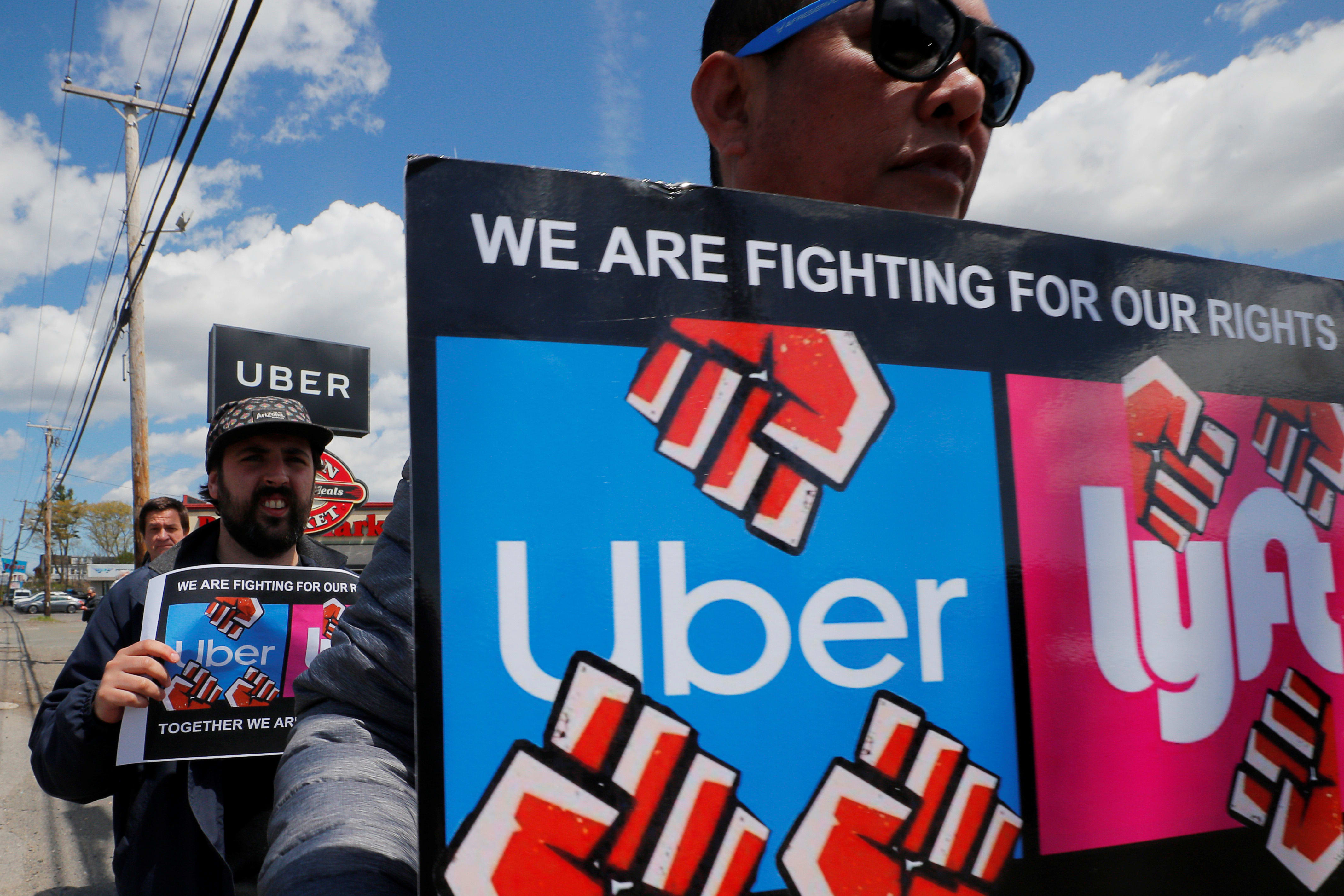SOCIAL MEDIA NEWS
Tech platforms like Facebook, YouTube, Uber have a people problem
Uber and Lyft drivers protest during a day-long strike outside Uber’s office in Saugus, Massachusetts, U.S., May 8, 2019.Brian Snyder | REUTERSThe tech industry loves platforms.About eight years ago, when Instagram was still an independent company with a handful of employees, I met co-founder Kevin Systrom at an event and listened to him explain his young photo-sharing app to a couple of folks from big tech companies.Instagram is not an app, he explained. It’s a platform.What he meant: Do not think of Instagram as a mere piece of software that lets people snap photos on their iPhone and put interesting filters on them. (That’s more like VSCO.) Rather, think of Instagram as a community, an easy place for mobile phone users who are interested in expressing themselves with photos to congregate and share their work. Eventually, perhaps, they could even make money from it.(Implied but left unsaid from Systrom: Think about advertisers interrupting these conversations with commercial messages that blend seamlessly into the flow.)I wasn’t sure I bought Systrom’s vision at the time — every start-up founder in that era said they were building a platform — but Facebook CEO Mark Zuckerberg had already done it. Paying $1 billion for a company with about a dozen employees seemed loony in 2012, but Zuckerberg understood the power of a visual communication platform in an era where always-on mobile devices with amazing cameras would become ubiquitous.Kevin Systrom, co‑founder of InstagramEmmanuel Dunand | Getty ImagesNow more than 1 billion people use Instagram to communicate with images every month and its popularity among young users is keeping Facebook relevant. Businesses can set up their own Instagram accounts, and add things like the ability to order food, book an appointment or make a restaurant reservation. Consumer brands such as Adidas and Nissan use the Instagram Stories feature to share narrative videos with their fans.Systrom, Zuckerberg and other tech entrepreneurs and investors love platforms because their value grows exponentially with the number of people using them, while the costs of creating and maintaining the platform grow much more slowly. The platform provider captures the difference and — boom — you’re headed toward a $1 trillion valuation.The early tech platformsMicrosoft was an early master of the platform model. It created an operating system — a set of interconnected software programs that mediated between hardware and software applications. Apple did the same. But Microsoft’s big bet was to sell that operating system to anybody who wanted to build a computer, and to publish specs so that anybody who wanted to write software for it could do so. Companies like Adobe and Autodesk came to rely on Microsoft for distribution.Over time, Microsoft extended this platform model to its sales strategy, relying mostly on partners to sell these increasingly complicated systems of hardware and software to government agencies and commercial companies.The result? PC makers, other software companies and consultants had a new way to make a living, so they willingly did a lot of the heavy lifting to get Microsoft products into the world. Along the way, Microsoft became the most valuable company in the world.Fast forward to 2019. Almost every major tech company today has some variant of this platform model, where growth is driven in large part by the efforts of third parties.On user-generated content platforms like Facebook, Instagram, Twitter and Google-owned YouTube, growth is driven by creators who upload their words, pictures and videos, the audience who consumes them and the advertisers who want to reach those consumers. In the case of two-sided marketplaces like the Amazon Marketplace or “gig economy” platforms like Uber and Lyft, the value is driven by the outsiders who have something to sell (third-party merchants, task-based labor) and the customers who want that product. The platforms merely sit in the middle.The trouble comes when the outsiders who create the value on these platforms no longer believe they’re getting a fair shake. That’s becoming increasingly common.Media companies and indie creators who develop content for Facebook and YouTube are griping about false-start business strategies and seemingly capricious rule changes that ban, hide or “demonetize” them.From the other side, consumers have begun to question why so much of the material they’re seeing is grotesque or misleading, from blatant attempts by foreign governments to influence elections to promotional videos for terrorism to a bottomless pit of conspiracy theories.In the case of the Amazon Marketplace, third-party sellers have complained about counterfeits (and overzealous anti-counterfeiting enforcement) cutting into their sales, while buyers have growing reason to be concerned that the products they’re buying are not carefully vetted and could be fake or unsafe.With gig economy platforms, workers are wondering why they’re scrambling to make ends meet while the companies are going public at multibillion-dollar valuations, making executives and early investors ridiculously rich. As the platform providers insist they have no control over these temporary workers, customers are increasingly worried about entrusting them with their safety.The Tom Sawyer modelIn each case, the platform providers shrug and say they’re doing their best.That’s a half-truth — they’re doing the best they can do while maintaining the platform economics that make them such attractive businesses.Facebook and Google could act like traditional media companies and hire thousands of employees to create, edit, produce and vet all the content they show on their sites.Amazon could act like a traditional retailer and hire thousands of people to vet the products sold on its sites, accepting liability when one of those products hurts somebody.Uber and Lyft could accept California’s proposed law that is trying to classify drivers as employees, rather than engaging in ridiculous semantic arguments that only a lawyer could love.But doing this would be admitting that the only way platform businesses make money is by getting non-employees to do an outsized amount of the work. Tom Sawyer would be proud.WATCH: Uber won’t reclassify drivers, believes it’s exempt from CA bill
Source link













